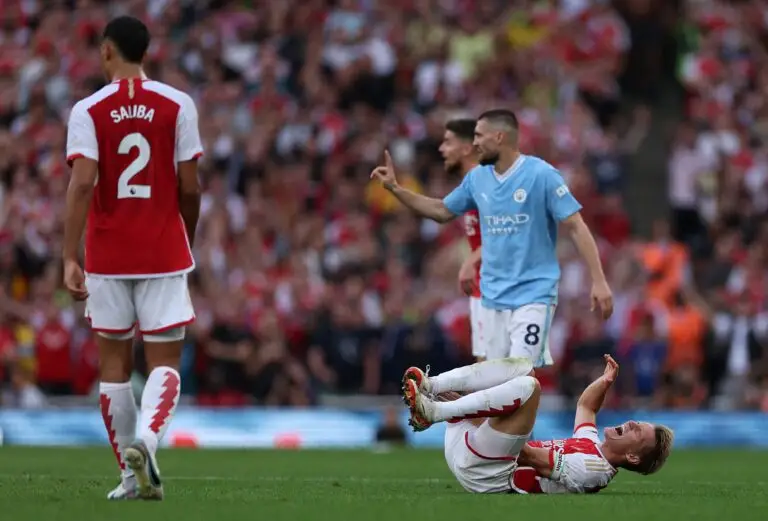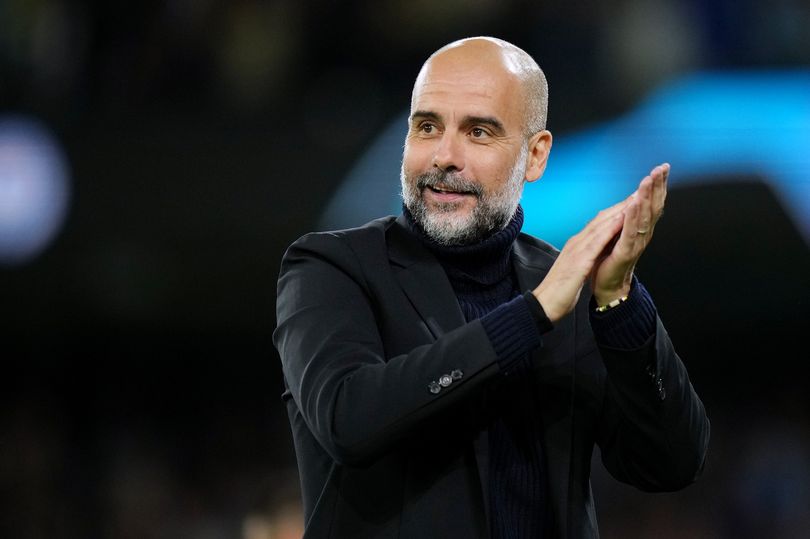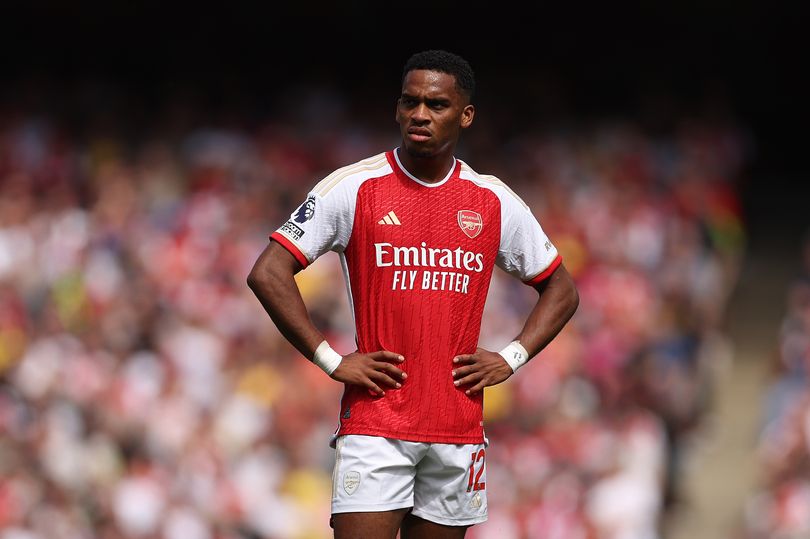Howard Webb, the head of PGMOL, has now explained why Mateo Kovacic wasn’t dismissed during Sunday’s match between Manchester City and Arsenal.
A late goal from Arsenal forward Gabriel Martinelli, deflected off Nathan Ake’s face, dropped the defending Premier League champions to third place in the standings at the weekend, handing the opposition their second straight loss in the English top division.
The conversation surrounding and following the game, however, was largely overshadowed by an incident in the first half, in which Mateo Kovacic continued to play despite making two challenges on Martin Odegaard and Declan Rice of Arsenal in quick succession.
When on-field referee Michael Oliver determined that the first challenge on the Norwegian was only deserving of a yellow card, his colleagues at Stockley Park concurred with his assessment.
PGMOL chief Howard Webb gave his opinion on the decisions that were made as well as the comparisons that were made with a tackle by Malo Gusto for Chelsea against Aston Villa that led to the Frenchman being sent off this week on “Match Officials: Mic’d Up.”.
The Premier League quoted Howard Webb as saying, “Of course we want to be as consistent as we can be throughout every game among our group, dealing with the same situations in the same way each week.
Nevertheless, every circumstance differs just a little bit. We accept and comprehend this.
This was obviously a poor tackle (on Odegaard), and I’m pretty sure that if Michael Oliver had shown a red card that day, the decision would have been as simple as “check complete.”.
‘”.
There are a few differences in this, said Webb.
Although some weight is on the left leg, Kovacic enters the tackle with his right leg.
As he kind of lunges in, the right heel strikes the ground, and the contact is then slightly more to the side with an upright foot rather than a side-on foot, as we saw with Gusto.
The VAR felt that the yellow card decision made on the field in this case wasn’t clearly and obviously wrong and decided to “check-complete” it because they believed that if they had intervened, the referee on the field would have had to make the decision again.
“.
As a result of a similar late challenge on Declan Rice of Arsenal, Mateo Kovacic received a stern warning from referee Michael Oliver moments later.
Oliver made sure the Croatian stayed on the field rather than giving him a second caution.
In response to questions about the decision, Howard Webb emphasized that VAR cannot be used to overturn decisions involving potential second yellow cards, but he also acknowledged that the Manchester City midfielder’s continued play was fortunate given the two challenges he had faced.
I firmly believe that Kovacic was fortunate to escape with just one yellow card.
A second yellow is something in which the VAR is unable to intervene.
He was, however, a very fortunate player to remain on the playing surface.
“.
“Of course, the referee, Michael, will no doubt review that, and he doesn’t want to have a negative impact on the game by overreacting to something.
And sometimes players will be on a yellow card and there will be pressure to show a second one.
“Players on the field will apply pressure, but you know it’s also true that if you react slowly, it will affect the game negatively.
So, after reflecting, he’ll see that the second foul should have also resulted in a caution, which would have resulted in Kovacic receiving a second yellow card and being sent off.
” .
Following a three-game suspension, Rodri will be eligible to play for Manchester City in their first matchback when they host Roberto De Zerbi’s Brighton and Hove Albion at home in the Premier League.
For more updates, we are at your service all day long and all night long.



